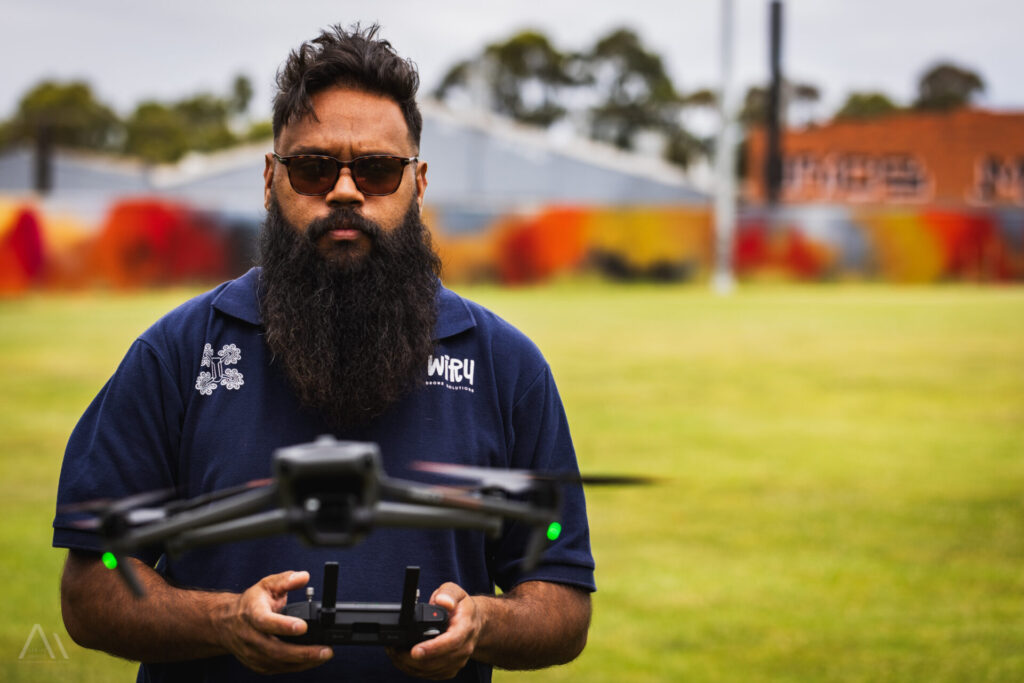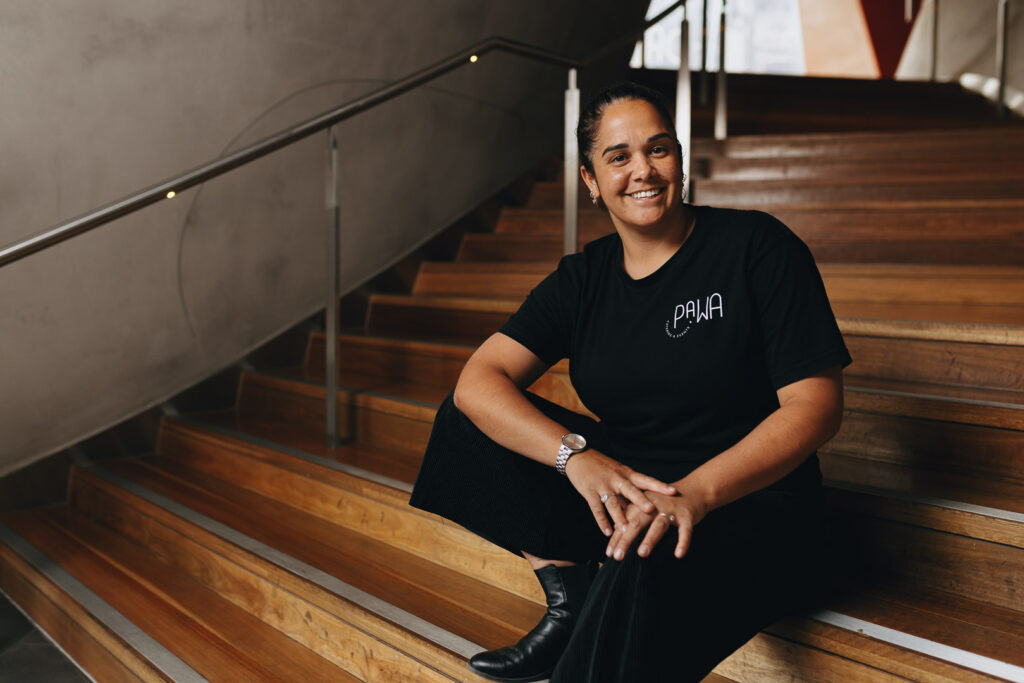Q&A with Leah Armstrong, Managing Director and Chair, First Australians Capital

‘Governments and banks are risk-averse, so there is a sweet spot for philanthropy to take prime position investing more and better in First Nations enterprise’
- The vision of First Australians Capital is an economy driven by First Australians. Can you tell us what FAC does and how it is carrying out its mission?
Aboriginal and Torres Strait Islanders’ cultural and intellectual strengths have sustained Australia for 65,000+ years, so to bring that into the new economy is exciting and something that all Australians should be proud of.
Our work is also about lifting aspirations of Aboriginal Torres Strait Islander people from thinking that their own economy is still attached to government, as it has been since colonisation. We want to see ourselves not as welfare recipients but as job creators and economic contributors.
At FAC, we provide the resources to build economically sustainable communities and self-determination through access to capital, to networks and relationships so that our businesses can capacity-build. We provide legal, accounting and marketing capacity to help grow the enterprises.
- There has been a lot of growth in the sector. Tell us about that.
There’s been huge growth in the Indigenous small-to-medium enterprise sector in the last 10 years, especially through government procurement and supply diversity, but what’s held back that growth in terms of job creation and economic self-determination is access to capital.
There needs to be a different approach to the way capital is distributed, and it’s got to be the ‘right capital’. Mainstream banks have not been able to support Aboriginal and Torres Strait Islander entrepreneurs because their terms and conditions are so exclusionary. You either have to have two years’ trading history, security and personal guarantees. If you’re starting out, you don’t have trading history and Aboriginal and Torres Strait Islander peoples rarely have the ability to secure against housing or another asset, so they are excluded from the normal line of business credit. There are also the spiritual and cultural considerations, but even if you were to consider using land as an asset, native title and land rights cannot be leveraged easily.
- What can the financial services sector do? What would be the barriers to change?
It’s a really hard thing for mainstream banks to change their credit criteria as we’ve been advocating because their system is built around the protection of capital and there’s legislation around it.
Where we have seen change in Canada and the US is that the major banks are looking at how they can invest into development financial institutions (DFIs), as they call them, that have more innovation and capacity to support underserved and underbanked communities.
First Australians Capital is a kind of DFI entity, bridging that gap. Models abroad have demonstrated that it works, but requires legislation and government to step into the space and potentially offer some underwriting guarantee to banks or investors. Once they’re established, these DFIs are able to attract investment from other sectors, such as philanthropy. Philanthropy is really stepping into this space, especially in the US, with DFIs but also impact investing.
- Tell us about FAC’s history of funding from the AMP Foundation. Adrian Appo received one of AMP’s first Tomorrow Makers grants in 2014 when he was at FAC, then you received a $1 million grant this year to mark the foundation’s 30th anniversary. What are the plans for that money and how important has that longevity of the relationship with AMP Foundation been?
AMP Foundation was the first to really get in behind us after we’d set up FAC based on what was happening in the US. They continued to back us as we’ve grown and to provide that capacity-building support. In the last six or seven years, we’ve supported more than 700 indigenous businesses with things like financial planning or help to get government capital.
In the last two years, with the support of another foundation and the Paul Ramsay and CAGES Foundations, we’ve been able to provide capital ourselves too. We’ve been piloting a fund to invest in Indigenous businesses to demonstrate how you invest to create impact. Indigenous businesses create four times multiplier for Aboriginal Torres Strait communities, because they’re many more times likely to employ Indigenous people and invest back into community. Indigenous entrepreneurs are driven by a social outcome, as well as being sustainable and financially secure.
Approximately 80% of that $1 million grant will become FAC’s equity, which is fantastic because that’s where we want to go. We’ve got a raise out at the moment of about $30 million and we’ve hit $15 million. We’ aiming to launch in October with at least $20 million. The William Buckland Foundation is another funder, among others.
- How are you planning to run it?
It’s an impact fund, so for the funders it’s about understanding what sort of impact that they want to achieve. It’s not a profit-driven, market-driven rate return fund. It’ll be a capital preservation, sort of concessional fund. There is an opportunity for a profit-driven fund down the track, but we’re trying to build the market. A growingIndigenous enterprise sector will then attract other investors and even banks will find businesses that meet their criteria.
Indigenous women-led businesses is a key area we are trying to catalyse. It will mostly be a debt fund with, 5-7 year terms, with low interest rates. We have an open and honest relationship with the businesses as well. So if they do end up struggling, we offer wrap-around support services. We can restructure the loan and help them readjust their strategy or access other market opportunities, because we don’t want to set them up to fail.
7. You, Adrian and two other founders established First Australians Capital in 2016. Tell us about your background.
As a Torres Strait Islander, my family were entrepreneurial in the work that we did for our communities where I grew up in Mackay, Queensland. I believe that by taking care of family and giving back to community, we are honouring our elders. In terms of FAC, we’ve been working on trying to address this gap for 15 years. Prior to FAC, I had I started an organisation in Newcastle called Yarnteen Aboriginal Corporation that had come out social welfare dealing with health and housing issues. But we wanted to focus on economic development and self-determination so began setting up commercial ventures, then reinvesting profits back into social and cultural outcomes. What I learned during 19 years supporting those businesses was where the gaps were, which are access to capital, networks and capacity building. So it’s been a long gestation but it’s a really exciting time now.
8. What are some of the businesses FAC has backed that you’re really proud of?
One that I always love to talk about is Sobah, the non-alcoholic beer. What they’re trying to achieve from a social outcome, health and mental health aspect is fantastic. Others include Chris Warrior, who’s set up a drone operation business, pictured right, and another is Pawa Catering, pictured below, fusing European with Indigenous cuisine. And Ngali, an award-winning sustainable fashion label, so the businesses are quite diverse.

9. How much does economic self-determination help to close the social, health and well-being gaps in indigenous communities?
It’s essential because we know what’s best for our communities and have the solutions. If we can create sustainable economic self-determination, we’ll be able to address the socioeconomic challenges ourselves. The issue with poverty isalso about powerlessness. So that’s why economic justice needs to be front and centre when supporting First Nations communities and families.
10. Do you have a sense of how many businesses you’ll be investing in?
Currently we’ve got around 45 direct investments under way, 28% of which are women-led. We’re hoping to get up to around 100 with the new fund. In the past overall, we’ve supported 700 businesses.
11. Philanthropy has been collaborating with First Nations businesses. How can that be developed further?
There needs to be a shift in the way philanthropy is given. I like to use the trust-based model and we are seeing some sparks of innovation happening in relation to multi-year and untied funding, and working in collaboration with the grantees. We need to have honesty around objectives and recognising when things don’t happen and learning from those. So for me, I’d like to see philanthropy lean into this trust-based approach with First Nations groups.
If we’re trying to address generations of exclusion, we’re not going to achieve that in one or two-year cycles. We need flexible funding and reporting frameworks. It’s about recognising that there’s community and cultural work that first Nations groups will do that won’t easily tie into a simple funding agreement, and it’s about paying what it takes. There’s also that extra cultural load we take on to educate non-Indigenous organisations that isn’t necessarily recognised or rewarded.
12. What opportunities do you see ahead?
If Australia really wants to push on climate justice, thenIndigenous communities need to be front and centre of that – on renewable energy, carbon abatement and society equity. There are the organisations working on land, sea and waters management but also other small businesses that can add to the picture with technology, monitoring and eco-tourism etc that can be supported to grow. If we don’t learn from the mistakes that the resource sector has made, it would be devastating for Aboriginal and Torres Strait Islander communities to be left on the sidelines of this when they have so much knowledge to bring.
There is some great advocacy work happening and some philanthropists leading in the space, but we would like to see more. Governments and banks are risk-averse, so this really is the sweet spot for philanthropy to take prime position and demonstrate how to invest and work better with First Nations groups.
It’s been great to see philanthropists coalesce around the Yes vote, but it will be interesting after the referendum to see if it goes back to business as usual or whether philanthropy really leans into this opportunity for future Australia.
